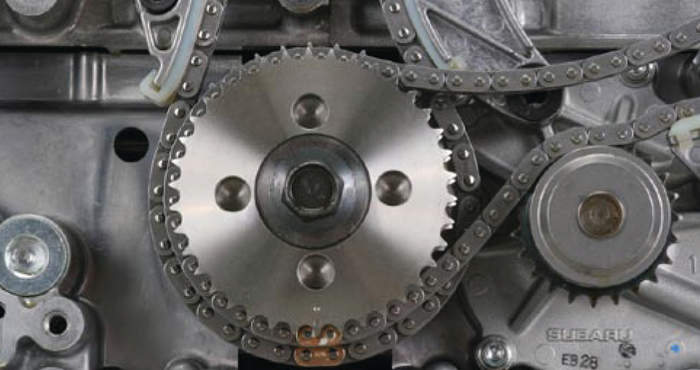By Dave Monyhan
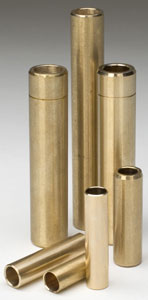 Worn guides will draw oil down the valve stem and will coat or coke on the port side of the valve. This will hinder air flow and cause engine performance to be compromised. Too much oil getting down that valve stem and may cause mechanical failure due to the increased possibility of pre-ignition.
Worn guides will draw oil down the valve stem and will coat or coke on the port side of the valve. This will hinder air flow and cause engine performance to be compromised. Too much oil getting down that valve stem and may cause mechanical failure due to the increased possibility of pre-ignition.
Worn valve guides can also be the cause of valve heads breaking off valve stems. When the guide is worn it no longer guides the valve concentrically up and down and actually allows the valve to start flexing and bouncing off the valve seat at various angles. After a while the head breaks off, and “Ka-Boom” you have little bitsy parts of the piston, and combustion chamber all combining like a blender and literally grinding that engine to a halt.
Proper clearances must be maintained to avoid these types of failures. Back where I come from if it is too tight is will stick and if it is too loose it will smoke. So today I am going to talk about the various methods for sizing your valve guides. I know, you have probably removed and installed hundreds of valve guides, maybe even thousands, so you know they have changed over the years. Guides are smaller on the ID so you have more material to remove and the guide material is harder than Superman’s kneecap, so this really does challenge traditional sizing tools. Guides are also made from various combinations of material ranging from cast iron, bronze, phosphorous bronze and manganese bronze.
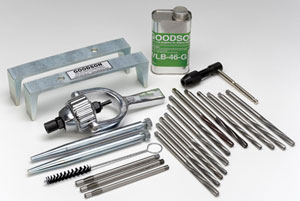
Back in the day aftermarket valve stems and valve guides were all standard sizes, but now they vary ever so slightly. Original equipment-supplied components versus aftermarket-supplied components can leave you needing that in-between sizing tool you don’t have on your tool board or it isn’t just a stock size that shop supply companies have in inventory. Higher rpm, lighter valves and stronger valve springs all contribute to the stresses your valve guides must stand up to and the best way to deal with that is to size that valve guide properly and accurately.
So, enough introduction. Let’s get down to the fun part of valve guide sizing. You have several options for sizing guides. I’m going to run through various tools, giving you my take on each.
Let’s start with Knurling
Yes, knurling is still performed, although not as often as it was back in the day. In the world of valve guide sizing, knurling does have a place. It’s a low cost repair that requires simple tooling and can be performed on a bench without the need of a seat and guide machine. The spiral groove does create a place to hold oil for lubrication and heat transfer. Knurling can save a valve guide from being replaced if the wear is less than .005˝, however in my opinion it just a band-aid and will fail in 5000 miles more or less. Sizes range from 5.5mm (.216˝) to 12.70mm (.500˝) in nominal sizes.
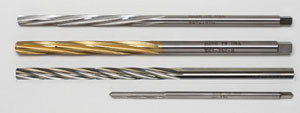
High-Speed Steel Reamers
These guys are still the choice for cast iron. They don’t need lubrication and should be used with a speed reducer. However I have talked to machinists who use lubrication to extend the life of this type of reamer with good success. Keep in mind that this style of reamer does one size only, so you will need a full set to cover everything coming into your shop. They are available in .0005˝ and .001˝ increments and are available in range from around 5mm (.0197˝) to 12mm (.472˝). Remember too, that these reamers are not for the hardened type of guides and just don’t work in bronze materials. Cost is not as big a factor; reamers aren’t cheap (at least not good ones) but they’re not as costly as some of the other methods we’ll be looking at.
Titanium-Coated Cobalt Reamers
If you’re only working on cast iron these may be the reamers you’re looking for. They are designed to be smooth and precise and are less brittle and cost less than carbide. As with all reamers, each one cuts at one specific size. They are available in .001˝ increments and range in size from 5mm (.0197˝) to 9.60mm (.387”) Cost is a little higher than High Speed Reamers, but the titanium coating will give a smoother finish.
Solid Carbide Reamers
A more recent entry into the market, these bad boys are specifically designed for bronze and manganese bronze. The six fluted design makes short work of all hardened bronze materials and are available in .0005˝ and .001˝ increments. Carbide reamers can actually be stroked in the guide so you can chuck them into an electric drill or even your seat and guide machine to achieve size without damage to the tool. The finish created by the six flutes allows most applications to be assembled without further finishing. Range from 4mm (.0157˝) to 9.5mm (.376˝). We’ve stepped up a little more in the cost department here too, but remember that carbide will outlast high-speed steel reamers so the price tag is easier to swallow. A word of caution: keep in mind carbide is very brittle, so don’t drop one on the floor as it won’t bounce. It will break, resulting in lots of special words being expressed loudly.
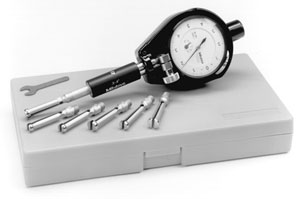
Carbide Sizing Balls
These sizing balls were designed to only size bronze liners. The bronze liner is a fast and simple guide repair system and sizing the guide liners is direct and to the point. Driven by hand or with an air hammer, they are available in .0005˝ and .001˝ increments and sizes range from 5mm (.196˝) to 9.5” (.376˝) I like to suggest a cookie sheet under the cylinder head when using sizing balls. Line the cookie sheet with a rubber material and the balls will not bounce off the bench onto the floor, eliminating the chore of finding them and, of course, saying those loud words again.
Valve Guide Hone
This tool has been a workhorse for many years and still delivers even in today’s variety of materials, working in both cast iron and bronze. It works just like a cylinder hone using a traditional vitrified abrasive so you have full control of finish and size. But it’s up to you to keep the bore round and straight. The guide hone allows you to produce the necessary finish on both cast iron and bronze. This hone requires lots of honing oil but also allows you approximately .005˝ adjustability per mandrel. This hone uses standard vitrified abrasives, is easy to use and does not require a setting fixture. Ranging from 4.7mm (.185˝) to 16.5mm (.650˝) for valve guides, it can also be expanded for use on lifter bores, making it a versatile tool. Of course, that versatility adds additional cost. Getting started is moderately expensive, but adding new mandrels, sleeves and stones is very affordable.
Diamond Reamer/Hone
Sunnen introduced an industry exclusive “Single Stroke Diamond Reamer/Hone” for guides a few years back. This tool has a lot going for it. It works for both cast iron and bronze materials. It’s very easy to use and is adjustable in a range of .005˝ per mandrel. This single pass adjustable tool, once set, will size the valve guide in a single pass. The quick disconnect drive makes this process much easier to go from valve guide to valve guide. Its .005˝ adjustable range is easy to adjust but it does require a sleeve-adjusting tool. This sizing tool is very durable, provides long life and covers a range from 6.0mm (.233˝) to 9.63mm (.379˝). The price is more than other methods, but if you’re doing a lot of guides, this could be the tool for you.
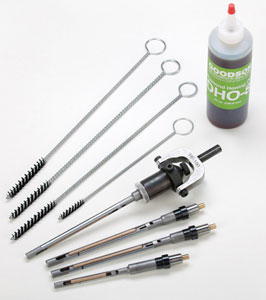
Diamond Valve Guide Sizing System
The diamond honing kit is the new kid on the block and is fully adjustable with a range of .010˝ to as much as .039˝ per mandrel. It is lightweight, easy to use and can hone any material out there, going from cast iron to bronze without skipping a beat. Mandrels are available from 4mm (.157˝) to 10mm (.393˝) and I hear that there will be some new mandrels soon for the larger diesel applications. This tool requires lots of honing oil, but it does not require any type of setting fixture. The diamond abrasive will last a long time (I mean a really loooooong time) so its up-front cost is more than made up for by the almost non-existent cost of replacement parts. Same deal here as the operator has all the responsibility to insure the guide bore is round and straight.
What about finish?
Ra finish is all over the board as I found during research for this article. Most agree that too rough will reduce life and too smooth will not allow enough oil to be held in the bore to provide the necessary lubricant and heat transfer. My research has found that somewhere between 30 Ra and 80 Ra is the range. Bronze is suggested to be a lesser or smoother Ra especially for high-performance and cast iron tends to be higher on the scale especially for diesel as this rougher Ra will hold that much needed oil for diesel lubrication and heat transfer.
Most reamers except the carbide reamers will not deliver the necessary Ra finish you need for these newer valve guide applications. The diamond hones and diamond reamers will deliver the finish, as will abrasive type of guide hones, but the regular reamers need a little help with another tool after the valve guides are to size. Using a small diameter flexible honing tool will get you a couple more positive Ra’s and then follow through with an honing tool designed for finish or plateau honing. Yes these soft honing mandrels are made out the same material you use for final cylinder hone finishing. My testing showed with the combination of hones delivered a finish in the single digits. Again the Ra finish is directly related to the application. Always check with your valve guide supplier to determine what Ra you need for that application.
That’s what I know about tools on the market today for sizing valve guides, but my tech guys would have my head if I didn’t mention the sheer importance of measuring the valve guide. You simply cannot guess or use the “feel” method any longer when it comes to determining the inside diameter of the valve guide. You must measure! The best tool, of course, is a dial bore gauge. Just like a cylinder bore gauge you need to keep the bore round, straight and on size. The vavle guide dial bore gauge allows you to see where the peaks and valleys are in the guide bore.
There is also the split ball gauge, which can be a very accurate tool in the right hands. I like to set it up as a “go-no-go” gauge. I use a micrometer to set it at the maximum diameter according to what I am working on. Then a quick check down the line of all the guide bore tells me which guides need replacing and which ones don’t. If it goes into the valve guide then I know right away the valve guide is out of spec and will need to be replaced. I can’t say this enough, always measure first, and then you can use to old “feel” method for final confirmation of your work.
So what tool is best for your shop? That’s up to you. Dollars do play a role as this can be a serious investment. Support from the supplier is very important for lifelong service. You may have two different systems depending on whether it is stock or high performance application. The main issue here is to do the research and go with a plan that over time gives your shop the full ability to service your customers’ valve guides, regardless of material.
See you in the shop!
Tech Feature courtesy of Engine Builder magazine.










